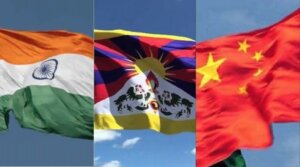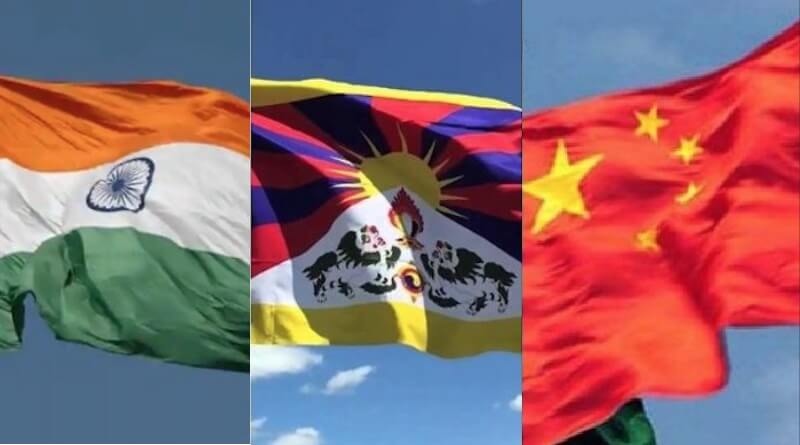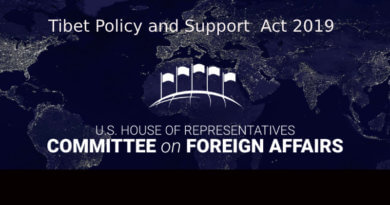What should India do to create a win-win situation for itself and Tibetans?
Several governments have raised the Tibetan issue, but India’s silence is disturbing. The Dalai Lama, the Tibetan government-in-exile, and a large diaspora of Tibetans are assets for India, which must be leveraged now.

India became independent on August 15, 1947, and the People’s Republic of China (PRC) became independent on October 1, 1949. In the intervening period and before that, Tibet was an independent country. An early understanding with Tibet could have helped India to formulate a clear-cut border, duly ratified by both governments. And if this had been done, India’s borders with China would have also been resolved, thus avoiding the 1962 debacle and other conflicts, including the current stand-off on the Line of Actual Control (LAC).
This understanding came much later. This is because India faced multiple challenges in 1947. A large number of princely states had to be integrated; the golden gap between August 15, 1947, and October 1, 1949, was marred by the first India-Pakistan conflict of 1947-48, so there was little focus on Tibet. The difficult, harsh, high altitude, and sparsely populated terrain also added to the problem.
With PRC opting for the current form of governance from October 1, 1949, the nation began to expand furiously. Tibet was made part of the PRC, albeit with force. After China’s forced occupation of Tibet, scattered protests and opposition continued in different parts of Tibet, but a larger uprising began in March 1959. This was crushed by the Chinese troops, which led to the Dalai Lama leaving Tibet on March 17, 1959, for India. Today, the Dalai Lama lives in Dharamshala (Himachal Pradesh), and many of his supporters live across India. A Tibetan government-in-exile operates from Dharamshala.
There are multiple reasons for discord between India and China, the unresolved boundary issue being the most important one. The United States has been attempting to keep the Tibet issue alive to pressure China. India must also leverage the presence of the Dalai Lama and the government in exile here.
China has been attempting to choose the successor of the Dalai Lama and wants a pro-China person to occupy the most important seat of the Tibetan religion. This has been opposed not only by Tibetans but other nations. The US passed legislation in 2020, allowing Tibetans to choose the successor of the Dalai Lama without any external influence. It has also appointed Uzra Zeya as a special coordinator for Tibet despite objections from China.
Several governments have raised the Tibetan issue, but India’s silence is disturbing. The Dalai Lama, the Tibetan government-in-exile, and a large diaspora of Tibetans are assets for India, which must be leveraged now. Any delay in exercising this option will embolden China, and not only will it not go back on the LAC in Eastern Ladakh to the pre-April-May2020 position, but it will also make new incursions, enhance claim lines and create conflict scenarios.
India’s sudden capture of the Kailash Ranges in Eastern Ladakh on the night of August 29-30, 2020, has not only given an outstanding win to India over China militarily but has also ignited hopes among Tibetans across the LAC for an independent homeland. The time is ripe for India to intervene into the Tibetan issue with a well-crafted move.
What should India do to create a win-win situation for itself and Tibetans?
It is interesting to see the recent efforts of the Government of India: On July 7, Prime Minister Narendra Modi extended birthday greetings to the Dalai Lama. This has caught China’s attention.
The Dalai Lama was in Ladakh during the LAC talks on July 17. Whether his presence in Ladakh and the date of these talks were a coincidence or a deliberate plan is unclear. The talks failed to resolve the three pending issues of Hot Spring, Depsang Plains and Demchok.
Even when more than two nations have been involved in deciding a border point, there are examples wherein the two have signed an agreement without factoring in the third. There is historical evidence in the Indian context wherein the Tri-junction in Uttarakhand (India), an issue between India, China, and Nepal, has been decided, at a different location, by China and Nepal, disregarding India.
Similarly, the border between India and China is the border between India and Tibet. The entire Chinese claim on Tibet is secondary, and whatever is agreed between Tibet and India will become binding for China. A comprehensive agreement between the Tibetan government-in-exile and the Government of India should be signed, recognising the Indian position in totality. The agreement should be passed by the Parliament of both the signatories.
Based on this agreement, the Survey of India should publish a map, which should become our official map and must be sent to all the countries and all international organisations.
China may react adversely, but objections must be raised if any other country publishes any map contrary to this.
It must be appreciated that the Dalai Lama was a religious and political head of the people of Tibet from November 17, 1950, and continues to remain so to date. Whatever agreement is signed by the Tibetan government-in-exile with the signature of the Dalai Lama will be a great milestone in the history of India. The technical and legal debate about its applicability may continue, but India needs to do it as early as possible. Now is the moment.
Major General Ashok Kumar, VSM (Retd) is a Kargil war veteran and defence analyst. He is visiting fellow of CLAWS and specialises in neighbouring countries with a special focus on China.






